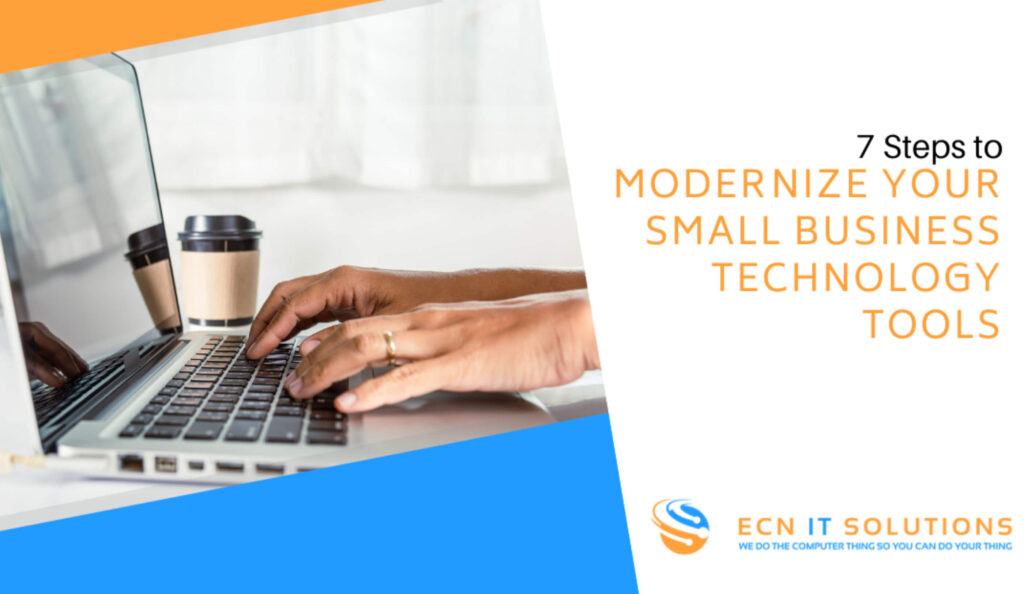In the dynamic landscape of contemporary business, the role of technology cannot be overstated. Small businesses, in particular, stand to gain significantly by strategically leveraging modern technology tools. This article aims to guide you through a comprehensive approach, breaking down the process into 7 essential steps to ensure a successful modernization of your small business technology tools.
Modernizing Small Business Tech
As technology continues to evolve at an unprecedented pace, staying abreast of these changes becomes imperative for small businesses striving to remain competitive. The journey toward modernizing your technology tools begins with a meticulous assessment of your current IT landscape.
1. Conducting a Thorough Technology Assessment
The initial step involves a meticulous examination of your existing technology infrastructure. Evaluate the performance, efficiency, and relevancy of your hardware, software, network, and security protocols. This comprehensive audit provides a clear snapshot of your current technological standing, serving as the foundation for a robust modernization strategy.
Hardware Evaluation:
Dive into the age, functionality, and performance metrics of your computers, servers, and other hardware components. Identify any outdated or underperforming devices that may hinder overall efficiency.
Software Inventory:
Take stock of your software applications. Analyze their utility, relevance, and effectiveness in contributing to your business objectives. This step is crucial in identifying redundant or obsolete software that might be replaced or upgraded.
Network Infrastructure Check:
Examine the speed, reliability, and security of your existing network infrastructure. A resilient and secure network is fundamental to supporting modern tools and ensuring seamless business operations.
Security Protocols Audit:
Evaluate the efficacy of your cybersecurity measures. With cyber threats evolving, it is essential to ensure that your security protocols are up-to-date and capable of safeguarding your business against potential risks.
2. Defining Modernization Goals and Objectives
With a comprehensive understanding of your current technology landscape, the next step is to articulate clear goals and objectives for the modernization process. Define what success looks like for your business in terms of technology integration and set measurable benchmarks.
Identifying specific objectives will provide a roadmap for the modernization journey and align the technology upgrade with your overarching business strategy.
3. Engaging Stakeholders and Building a Technology Task Force
A successful modernization initiative requires collaboration and input from various stakeholders within your organization. Assemble a dedicated technology task force comprising individuals from different departments to ensure a holistic approach.
Key Stakeholders:
- Leadership Team: Gain support and commitment from top-level executives to facilitate the smooth integration of modern tools.
- IT Department: Involve your IT professionals in the decision-making process. Their expertise is invaluable in selecting and implementing suitable technology solutions.
- End Users: Consider the perspectives of employees who will be utilizing the new technology. Their insights can highlight specific needs and potential challenges.
4. Researching and Selecting Modern Technology Solutions
Armed with a clear vision and engaged stakeholders, the next crucial step is researching and selecting modern technology solutions tailored to your business needs. This involves exploring advancements in hardware, software, and cloud-based services.
Hardware Upgrades:
Investigate the latest hardware technologies that align with your business requirements. This could include upgrading computers, servers, or investing in emerging technologies like IoT devices.
Software Integration:
Explore software solutions that can enhance efficiency, collaboration, and overall productivity. This may involve adopting cloud-based applications, project management tools, or customer relationship management (CRM) systems.
Cloud-Based Services:
Consider migrating to cloud-based services for increased scalability, accessibility, and cost-effectiveness. Cloud solutions can provide flexibility and enable remote work, a critical consideration in the modern business landscape.
5. Developing a Comprehensive Implementation Plan
A well-structured implementation plan is crucial to the success of your modernization efforts. Outline a step-by-step strategy that includes timelines, resource allocation, and potential challenges.
Implementation Phases:
- Pilot Phase: Test the new technology solutions on a small scale to identify any unforeseen issues.
- Rollout Plan: Gradually implement the technology upgrades across different departments or teams.
- Training Programs: Conduct comprehensive training programs to ensure that employees are adept at using the new tools.
6. Monitoring and Adapting to Changes
Post-implementation, monitor the performance of the new technology tools and gather feedback from end-users. This ongoing evaluation allows for necessary adjustments and ensures that the technology aligns with evolving business needs.
Feedback Loops:
Establish regular channels for feedback from employees to identify any challenges or areas for improvement.
Performance Metrics: Define key performance indicators (KPIs) to measure the impact of the new technology on business processes and outcomes.
7. Ensuring Cybersecurity Measures
Amid the benefits of modern technology, the risk of cybersecurity threats looms large. Implement robust cybersecurity measures to safeguard sensitive data and protect your business from potential breaches.
Encrypt sensitive data to prevent unauthorized access and ensure the confidentiality of critical information. Conduct regular security audits to identify and address vulnerabilities promptly.
Modernize Your Technology Today
The modernization of small business technology tools is a multifaceted process that demands careful planning and execution. By conducting a thorough technology assessment, defining clear objectives, engaging stakeholders, selecting appropriate solutions, developing a comprehensive implementation plan, monitoring changes, and ensuring cybersecurity measures, your business can position itself for success in the digital era.
Remember, the journey toward modernization is ongoing, and adaptation to emerging technologies is key. Stay proactive, stay innovative, and empower your business for sustained growth in an ever-evolving technological landscape.
Contact Us to embark on your technology modernization journey. We’re here to guide you every step of the way.

